Focus | Sichuan University Metallurgical Archaeology Team Publishes New Results in Antiquity - The Southern Transmission of Metallurgy: New Archaeological Discoveries at the Jicha Site in the Hengduan Mountains of Yunnan
Recently, the archaeometallurgy team of the Center for Archaeological Science, Sichuan University, together with the Yunnan Provincial Institute of Cultural Relics and Archaeology and other institutions, published their latest research findings in the internationally renowned archaeological journal Antiquity, entitled Southbound transmission of metallurgy: new excavations at Jicha in the Hengduan Mountains, Yunnan. Based on the Jicha site in Yunnan and newly discovered metallurgical remains, the article proposes a new understanding of the origin and development of metallurgy and the metallurgical technology system in the southwestern mountains of China and mainland Southeast Asia.
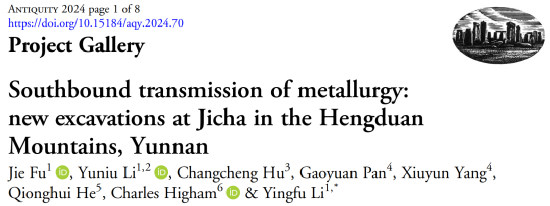
The Jicha site is located in Gongle Village, Baijixun Township, Weixi Lisu Autonomous County, Diqing Tibetan Autonomous Prefecture, Yunnan Province. From February to September 2022, the archaeometallurgy team of the School of Archaeology and Museology of Sichuan University and the Yunnan Provincial Institute of Cultural Relics and Archaeology excavated the site, completely uncovering a settlement from the Late Neolithic to the Early Iron Age, and clearing out a batch of stone-based buildings, stilt buildings, semi-subterranean buildings, and infant burials. The most important discovery was the metallurgical production area in the center of the settlement, where several subterranean furnaces were cleared, and metallurgical-related artifacts such as stone hammers, casting molds, crucibles, slag, and material blocks were unearthed, providing a typical case for restoring the metallurgical production chain in the southwestern mountains.
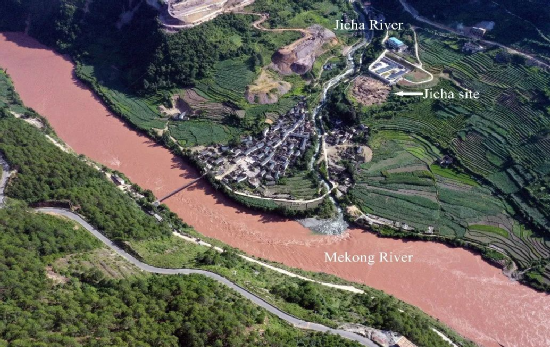
Distant view of the Jicha site (from northeast to southwest)
The origin of metallurgy in the southwestern mountains of China and mainland Southeast Asia is a hot academic issue in the region. For many years, the international academic community has been debating related issues, gradually forming two major theoretical models. One is the "long chronology" led by Joyce White, which, based on the dating data of the Ban Chiang site in northeastern Thailand, proposes that copper metallurgy technology was introduced from the Seima-Turbino people in South Siberia to northwestern China between 2000-1800 BC, and then entered the Yunnan-Guizhou Plateau and Southeast Asia via the "mountain route", that is, the eastern foothills of the Qinghai-Tibet Plateau. The second is the "short chronology" led by Charles Higham, which, based on the dating data of multiple sites such as Ban Non Wat in north-central Thailand, believes that copper metallurgy technology was introduced from the Shang Dynasty in the Central Plains via the "coastal route", that is, the Lingnan area, to the Yunnan-Guizhou Plateau and Southeast Asia between 1100-1000 BC.
The Jicha site provides an important reference for the above questions with its key geographical location, complete chronological sequence, and complete metallurgical production chain. The Jicha site is located in the hinterland of the Hengduan Mountains, along the Lancang River, which is a key node of the "mountain route". The Phase II remains of the Jicha site (1600-1200 BC) show black painted pottery of the Bronze Age archaeological culture in the northwest region, providing an important chronological marker for the early Bronze Age in the region. The metallurgical remains discovered at the Jicha site, represented by flat round stone hammers, subterranean furnaces, and bent blast pipes, have once again confirmed the consistency and common origin of the metallurgical technology system in the region since the author's team discovered the Longbohe site on the Sino-Vietnamese border. Based on the above understanding, the author's team proposed the view that metallurgy was introduced to the Yunnan-Guizhou Plateau and Southeast Asia via the eastern foothills of the Qinghai-Tibet Plateau between 1600-1200 BC, that is, the "mountain metal road".
The first author of this article is Fu Jie, a doctoral student at the School of Archaeology and Museology of Sichuan University, the second author is Associate Professor Li Yuniu, and the corresponding author is Professor Li Yingfu. Hu Changcheng from the Yunnan Provincial Institute of Cultural Relics and Archaeology, Pan Gaoyuan and Yang Xiuyun from the Diqing Tibetan Autonomous Prefecture Cultural Relics Management Office, He Qionghui from the Weixi Lisu Autonomous County Cultural Relics Management Office, and Charles Higham, Honorary Professor of the University of Otago, New Zealand, are co-authors of this article. This research was funded by the Special Fund for Basic Science and Technology Resources Survey of the Ministry of Science and Technology (2022FY101505), the National Natural Science Foundation of China (T2350410495), the "Double First-Class" Talent Special Fund of Sichuan University (SKSYL2023-05), and the 2035 Pilot Program (SKSYL2023-05).
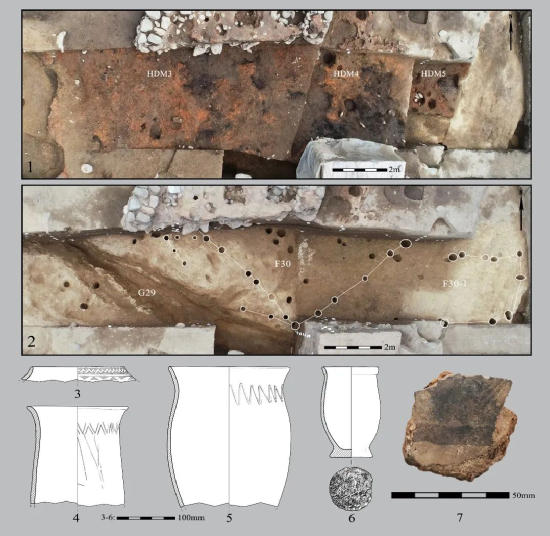
Late Neolithic to Early Bronze Age remains at the Jicha site
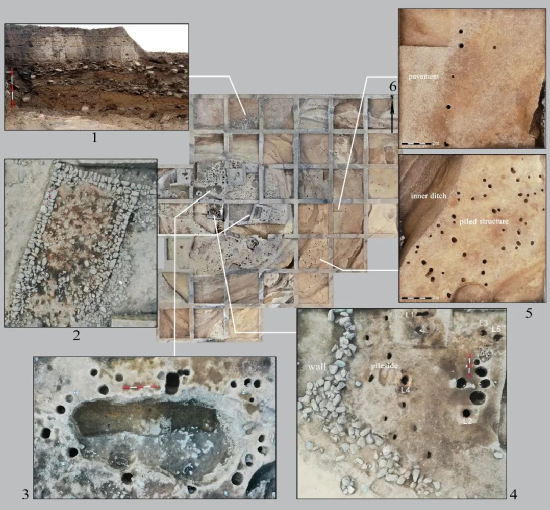
Settlement structure of the Late Bronze Age to Early Iron Age at the Jicha site
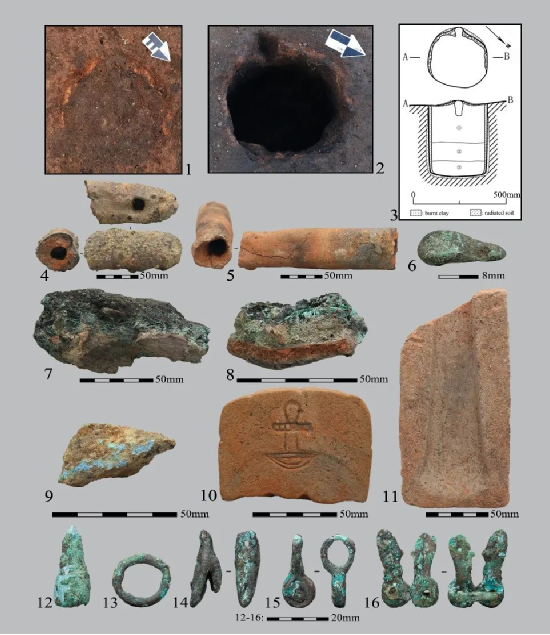
Metallurgical remains at the Jicha site
